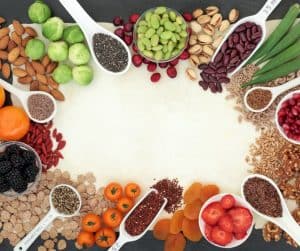
There are many benefits of blueberries for improving overall health. Of particular interest for our athletes is how blueberries reduce inflammation.
Delayed onset muscle soreness (DOMS) can cause significant discomfort after a race or hard session. This discomfort and heaviness in the muscles are thought to be due to micro tears in muscles and exercise-induced inflammation. Increasing your nutritional intake of anthocyanin flavonoids the anti-inflammatory agents found in berries may help to reduce inflammation.
How do you blueberry?
A blueberry smoothie is a convenient post-training choice. In a randomized crossover study, participants were asked to consume either a smoothie with 1.5 cups of frozen blueberries, a banana and apple juice, or a smoothie that substituted berries for dextrose and vitamin C powder to match the calorie and antioxidant content of the blueberry smoothie. The participants consuming the blueberry smoothie demonstrated significantly reduced exercise-induced oxidative stress over the next 24 hours. The consumption of the blueberry smoothie also resulted in a recovery of peak strength far exceeding that of the substitute smoothie. These findings are particularly relevant to athletes in multi-day events and endurance athletes with high mileage over successive days. Cherries, spinach, ginger, turmeric, oily fish, and watermelon have all been shown to help reduce muscle soreness.
Quercetin is another anti-inflammatory flavonoid found in foods. Capers, dill, broccoli, tomato, asparagus, green capsicum, red onions, apple, and grapes all contain quercetin as highlighted in our previous blog here
Regular intake of blueberries can also reduce period pain.
Improvements in cognitive function with the consumption of blueberries have also been well documented. The brain-enhancing metabolites of anthocyanins peak in the bloodstream within an hour and are accessed by the body as blueberries are digested by our gut microbiome and colon.
The natural prebiotic and probiotic action of blueberries occurs as the bacteria in the gut breaks down the berries and absorbs the active compounds back into the body. Blueberry consumption may help our youngsters with brain development and also our mature athletes. The consumption of one cup of blueberries a day has been shown to delay cognitive decline by over two and a half years in middle age and in seniors, reduced artery stiffness, osteoarthritis, and improve immune defense against viral infections. In studies looking at children consuming blueberries, the improvement in cognitive performance was seen within hours of just a single meal with blueberries. Now that is powerful stuff!
In the southern parts of Australia, fresh blueberries can become expensive and reduced in quality due to storage and seasonality. Frozen berries provide a good alternative. While fresh is typically best, there are exceptions to this rule.
Several studies have found that frozen berries contain the same nutritional elements as fresh berries that have just been harvested. According to studies conducted by John Hopkins University, recently harvested frozen berries maintain their optimal nutrition levels for several months. Freezing berries makes it possible to easily access these superfoods year round.
Otway chemical-free blueberries are a great choice. Their berries are plump, juicy, and always very fresh as they are locally grown, picked daily when in season, and frozen. Their berries are superb in summer but you will always find a packet in my freezer as a backup supply.
If you find smoothies containing frozen berries too cold in winter, add warm milk or a teaspoon of ground turmeric or ginger to the smoothie. You can always thaw the berries and allow them to come up to room temperature before adding them to your smoothie. For a creative way to enhance your recovery, check out our Beet berry smoothie bowl.
Sound nutritional advice is key to sports performance. Our holistic female-centric approach gets results! Find out how we can help you here
References
Connor, A. , Luby, J., Hancock, J, Berkheimer, S., and Eric J. Hanson, E.. (2002). Changes In Fruit Antioxidant Activity Among Blueberry Cultivars During Cold-Temperature Storage,. Journal of Agricultural and Food Chemistry, 50(4), 893-898.
Du, C., Smith, A., Avalos, M., South, S., Crabtree, K., Wang, W., & Juma, S. (2019). Blueberries improve pain, gait performance, and inflammation in individuals with symptomatic knee osteoarthritis. Nutrients, 11(2), 290.
Hein, S., Whyte, A. R., Wood, E., Rodriguez-Mateos, A., & Williams, C. M. (2019). Systematic review of the effects of blueberry on cognitive performance as we age. The Journals of Gerontology: Series A, 74(7), 984-995.
Kalt, W., Cassidy, A., Howard, L. R., Krikorian, R., Stull, A. J., Tremblay, F., & Zamora-Ros, R. (2020). Recent research on the health benefits of blueberries and their anthocyanins. Advances in Nutrition, 11(2), 224-236.
Sucharita, G., Revathi, K., Venkatesh, P., Kalarini, D. H., & Prema, R. A Review on Benefits of Blue Berries.
Tarazona-Díaz, M. P., Alacid, F., Carrasco, M., Martínez, I., & Aguayo, E. (2013). Watermelon juice: potential functional drink for sore muscle relief in athletes. Journal of agricultural and food chemistry, 61(31), 7522-7528.
Whyte, A. R., Rahman, S., Bell, L., Edirisinghe, I., Krikorian, R., Williams, C. M., & Burton-Freeman, B. (2021). Improved metabolic function and cognitive performance in middle-aged adults following a single dose of wild blueberry. European Journal of Nutrition, 60(3), 1521-1536.
Benefits of Blueberries for Artery Function.
Lohachoompol, V., Srzednicki, G., & Craske, J. (2004). The change of total anthocyanins in blueberries and their antioxidant effect after drying and freezing. Journal of Biomedicine and Biotechnology, 2004(5), 248.[/vc_column_text][/vc_column][/vc_row]

Kate Smyth is a sports naturopath, nutritionist and female-centric running coach. She is the founder of the Athlete Sanctuary – a holistic healthcare clinic for athletes of all levels and sporting codes.
Kate has a thirst for knowledge, with two bachelor’s and a master’s degree under her belt. She has been involved in sports for many decades and competed for Australia in the Commonwealth Games and Olympic Games marathons with a personal best time of 2 hours 28 minutes.
Targeted naturopathic care, nutrition and holistic coaching for active individuals.
Normatec Recovery systems- hire and purchase
Birregurra -28-30 Strachan Street,
Torquay- 20 Cantala Drive, Jan Juc
TELEHEALTH – Aus wide, New Zealand, Canada and globally (except US)
Melbourne and Ballarat clinics are currently online